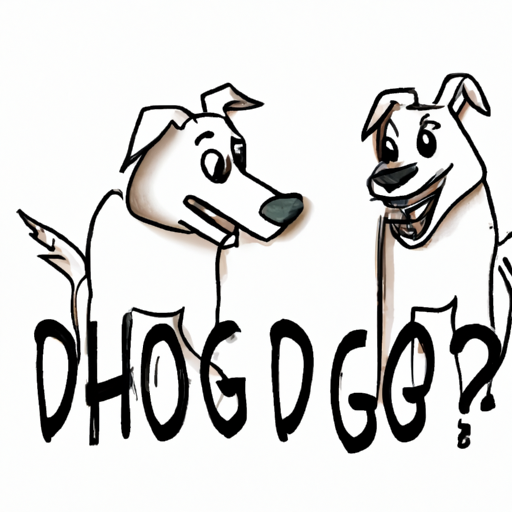As a dog owner, it is essential for you to understand the behavior of your pets. You might have observed them roughhousing and wondered, are they playing or fighting? This article will provide you with the necessary insights and tools to distinguish between playful romping and aggressive behavior.
1. Understanding Dog Play
First, let’s understand what constitutes dog play. Dogs, like humans, play for fun. It’s a way for them to socialize, learn behavioral boundaries, and burn off energy.
- Play bow: One of the most common signals is the play bow. This is when your dog stretches its front legs out in front of them, butt in the air, ready to launch into action.
- Relaxed body and wagging tail: If your dog’s body is loose and their tail is wagging, this is a sign that they are relaxed and enjoying the activity.
- Role reversal: Dogs often switch roles during play. One minute they might be chasing, the next they might be the one being chased. This is a sign of fair play.
- Barking and growling: Sounds can be confusing because dogs often bark and growl during play. If these sounds are high-pitched and vary in tone, they are often signs of playfulness.
2. Signs of Dog Fighting
Next, let’s look at signs that your dogs may be fighting. While some behaviors may seem similar to play, there are distinct differences.
- Fixed gaze and stiff body: Dogs who are fighting often stare each other down with a fixed gaze and a stiff body. This is a clear sign of aggression.
- Snarling and showing teeth: While dogs might show their teeth during play, if this is accompanied by snarling and a deep, low growl, it is a sign of aggression.
- Prolonged mounting: While mounting can be a sign of play, if it is prolonged and one dog seems distressed, it could be a sign of dominance and aggression.
Here’s a quick table for reference:
| Playful Behavior | Aggressive Behavior |
|---|---|
| Play bow | Fixed gaze |
| Relaxed body and wagging tail | Stiff body |
| Role reversal | Snarling and showing teeth |
| High-pitched barks and growls | Deep, low growls |
3. How to Safely Break Up a Dog Fight
If you ever find yourself in a situation where your dogs are fighting, it’s important to know how to break up the fight safely.
- Stay calm: Your dogs can sense your energy. If you’re panicked, they can become more agitated.
- Do not physically intervene: You risk getting bitten. Instead, use a loud noise or water to distract them.
- Separate and isolate: Once they’ve stopped fighting, separate them into different rooms to calm down.
4. When to Seek Professional Help
Sometimes, aggressive behavior can be a sign of underlying issues. If your dogs are frequently fighting, you should seek the help of a professional dog trainer or behaviorist. They can provide you with tools and strategies to manage your dogs’ behavior.
5. FAQ
-
Q: My dogs growl during play, is that normal?
A: Yes, high-pitched barks and growls are often signs of playfulness. However, deep, low growls can be a sign of aggression. -
Q: One of my dogs always seems to be the “winner” during play, is that okay?
A: Role reversal is a sign of fair play. If one dog always ends up on top, it could be a sign of dominance, which can lead to aggression. -
Q: What should I do if my dogs won’t stop fighting?
A: If your dogs are frequently fighting, it’s important to seek professional help. A dog trainer or behaviorist can provide you with strategies to manage their behavior.
Remember, as a caregiver, understanding your dogs’ behavior is key to ensuring a safe, happy, and healthy environment for them. By learning the signs of play and aggression, you can help prevent fights and foster a positive relationship between your pets.



